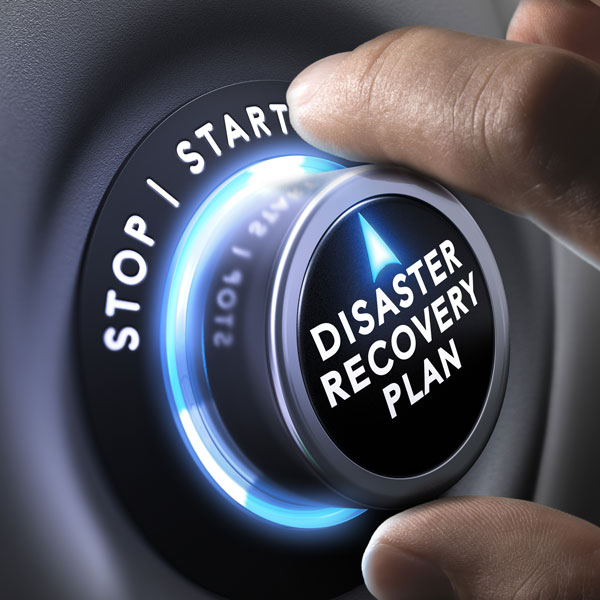How a Disaster Recovery Plan Can Help Your Business Run Remotely

Prior to the pandemic, many forward-thinking business leaders had already begun moving certain tasks into a remote environment. Post-pandemic, a large portion of the total workforce is now on a completely remote or hybrid working schedule. And while this arrangement can be very effective at helping your company stay lean and efficient, it can also be challenging when planning for certain aspects of your business. Fortunately, that isn’t the case with disaster recovery planning, which can go hand in hand with remote operations.
A comprehensive disaster recovery plan will address all changes in your operational processes, including remote operations. But the very nature of a remote workforce will make it easier to plan for some disasters and more difficult for others. In either event, a disaster recovery plan will work for the benefit of your company by restoring operations as quickly as possible.
In achieving this goal, a disaster recovery plan will guide your remote workers on the steps they need to take to restore operations in the immediate aftermath of a disaster and in the long term. And having a plan laid out for your team ensures that your business will continue operating remotely.
As more companies moved to a remote structure, it has thrown a wrench in many disaster recovery plans, which commonly assume workers are located in a centralized office or physical location. Fortunately, this change in organizational structure has also forced many companies to revisit how they approach security and connectivity to ensure that data remains secure even with a decentralized workforce.
Since many organizations have already addressed enhanced security and remote access, the impact of a disaster that devastates a central location can be minimized. For instance, the effects could be devastating when a natural disaster or fire destroyed a building in the past. Not only did the company suffer a loss of space where employees could be productive, they typically lost much of their IT infrastructure and data assets. And a loss of this magnitude could cripple the business for weeks or even months. In some instances, the company may never recover what was lost.
But with the move to remote operations, many companies have opted to put cloud solutions in place and move infrastructure to a decentralized configuration. The benefit of this arrangement is that in a similar disaster, even if one location is completely devastated, you will still have digital resources to help recover operations and likely only have minimal data loss.
However, companies that have not moved to a remote structure can also ensure that disaster planning optimizes the path to recovery by outlining tasks that can be done remotely. In these instances, staff may not be used to working from home or another location. Additionally, they may not be familiar with the processes and procedures that must be in place to ensure data remains secure. These challenges provide ideal conditions for mistakes that can prevent operations’ recovery process.
But creating a disaster recovery plan can help your staff overcome the challenges of shifting to remote operations if your primary place of business is no longer available. As a part of the disaster recovery plan, you can provide step-by-step instructions for accessing the resources, networks, and platforms required to help employees move towards restoring operations. And this type of instruction decreases confusion related to roles and responsibilities, allowing your team to work collectively and collaboratively towards a common goal.
Disaster recovery also plans generally identify backup options, which can benefit your business for various reasons. Sometimes, simple errors or mistakes can result in data loss when moving to a remote structure. Backup systems identified through disaster planning can be useful for these settings and during actual disasters. These backups can help your business run smoothly even when you experience routine hiccups during the shift to remote operations.
Disaster recovery plans are important to reduce the impact of any type of disaster by allowing the organization to preserve its IT resources and quickly restart systems. This plan identifies critical business functions and can also identify ways to prevent some types of disasters, such as cyberattacks. In addition, the disaster recovery planning process will prepare your staff and systems for overcoming disruptive events with minimal effort. Throughout the planning process, you can identify ways to enhance your remote operations and optimize the functionality of your entire business. For more information about disaster recovery and its benefits, contact Sagacent Technologies today.
Sagacent Technologies offers technology management and support, including proactive/preventative maintenance, onsite and offsite data back-ups, network and security audits, mobility solutions, disaster planning, and emergency business resumption services. The company serves clients of 10 to 150 employees within the Silicon Valley region.
